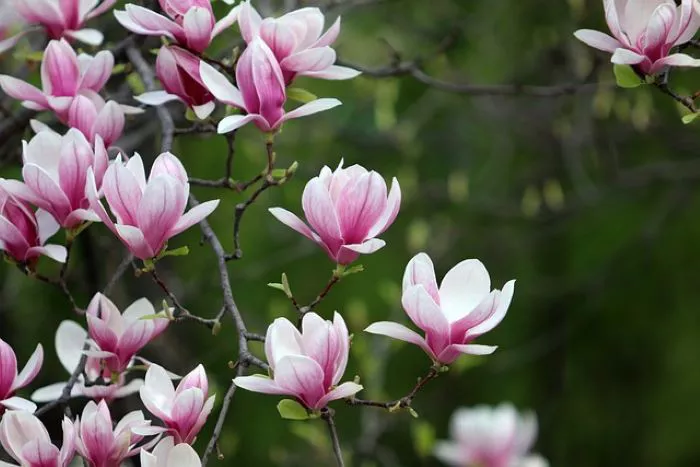Magnolia flowers are celebrated not only for their striking beauty but also for their captivating fragrance. These flowers belong to the Magnoliaceae family and are found in various species around the world. Each species has its unique scent profile, contributing to the overall allure of magnolias. This article explores the fragrance of magnolia flowers, the factors influencing their scent, and their uses in perfumery and aromatherapy.
Characteristics of Magnolia Fragrance
The scent of magnolia flowers is often described as sweet, floral, and slightly citrusy. The fragrance can vary significantly depending on the species of magnolia. Some magnolias emit a more intense aroma, while others have a subtler scent. The general characteristics of magnolia fragrance include the following aspects.
Sweetness
Many magnolia flowers have a sweet and rich fragrance. This sweetness is often reminiscent of other popular floral scents, such as jasmine and gardenia. The sweetness draws people in, creating an inviting and pleasant atmosphere.
Floral Notes
Magnolia flowers have a distinct floral scent that is both fresh and delicate. The floral notes can evoke feelings of spring and renewal, making them a popular choice for gardens and floral arrangements. The fragrance is often described as creamy and soft, adding to its appeal.
Citrus Undertones
Some species of magnolia, such as the Southern magnolia (Magnolia grandiflora), exhibit subtle citrus undertones in their scent. This adds a refreshing quality to the fragrance, distinguishing it from other floral scents. The combination of sweet and citrus notes creates a complex and intriguing aroma.
Species and Their Fragrance Profiles
Different species of magnolia produce varying scents. Here are a few notable species and their unique fragrance profiles.
Southern Magnolia (Magnolia grandiflora)
The Southern magnolia is one of the most well-known species. Its large, white flowers are famous for their sweet, creamy fragrance. The scent is often described as rich and intoxicating, making it a favorite in gardens and landscapes. The Southern magnolia blooms in late spring and summer, filling the air with its delightful aroma.
Star Magnolia (Magnolia stellata)
The Star magnolia is known for its star-shaped flowers that bloom in early spring. Its fragrance is lighter and more delicate than that of the Southern magnolia. The scent is sweet and fresh, with hints of citrus. This makes the Star magnolia a lovely addition to any garden, especially in early spring when few other flowers are in bloom.
Saucer Magnolia (Magnolia x soulangeana)
The Saucer magnolia is a hybrid species known for its large, showy flowers. Its fragrance is sweet and floral, with a hint of spiciness. The scent is more pronounced than that of the Star magnolia, making it a popular choice for those seeking a fragrant garden feature. The Saucer magnolia blooms in early spring, attracting attention with its beauty and aroma.
Factors Influencing Fragrance
The scent of magnolia flowers can be influenced by several factors. Understanding these factors can help in appreciating the complexity of their fragrance.
Environmental Conditions
The environment in which magnolia flowers grow plays a significant role in their fragrance. Factors such as temperature, humidity, and sunlight can affect the intensity and quality of the scent. For example, warmer temperatures may enhance the release of volatile compounds responsible for the fragrance, resulting in a stronger aroma.
Time of Day
The fragrance of magnolia flowers can vary throughout the day. Many flowers release their scents more intensely during the evening or at night. This is often due to the activity of pollinators such as moths, which are attracted to the fragrance. Gardeners may notice that the scent is more pronounced during certain times of day.
Flower Maturity
The age of the flower also affects its fragrance. As magnolia flowers mature, their scent may change. Newly opened flowers often have a more intense fragrance, while older blooms may have a subtler aroma. This progression can be observed in many flowering plants, including magnolias.
Uses of Magnolia Fragrance
The enchanting scent of magnolia flowers has found its way into various applications, particularly in the fields of perfumery and aromatherapy.
Perfumery
Magnolia fragrance is a popular choice in the perfume industry. Its sweet and floral notes make it an excellent ingredient for creating fresh and elegant fragrances. Perfume makers often use magnolia essential oil or extracts to add depth and complexity to their blends. The scent of magnolia is often associated with femininity and grace, making it a sought-after note in women’s perfumes.
Aromatherapy
In aromatherapy, magnolia essential oil is valued for its calming and soothing properties. The fragrance is believed to promote relaxation and reduce anxiety. It can be used in diffusers, bath products, or massage oils to create a tranquil atmosphere. The sweet and floral aroma of magnolia can enhance mood and provide a sense of well-being.
Conclusion
Magnolia flowers are celebrated for their captivating fragrance, which varies among different species. Their sweet, floral, and sometimes citrusy scent makes them a favorite in gardens and floral arrangements. Understanding the characteristics of magnolia fragrance, the factors that influence it, and its uses in perfumery and aromatherapy enhances our appreciation of these beautiful blooms. Whether enjoyed in a garden or incorporated into products, the scent of magnolia flowers continues to enchant and inspire.


